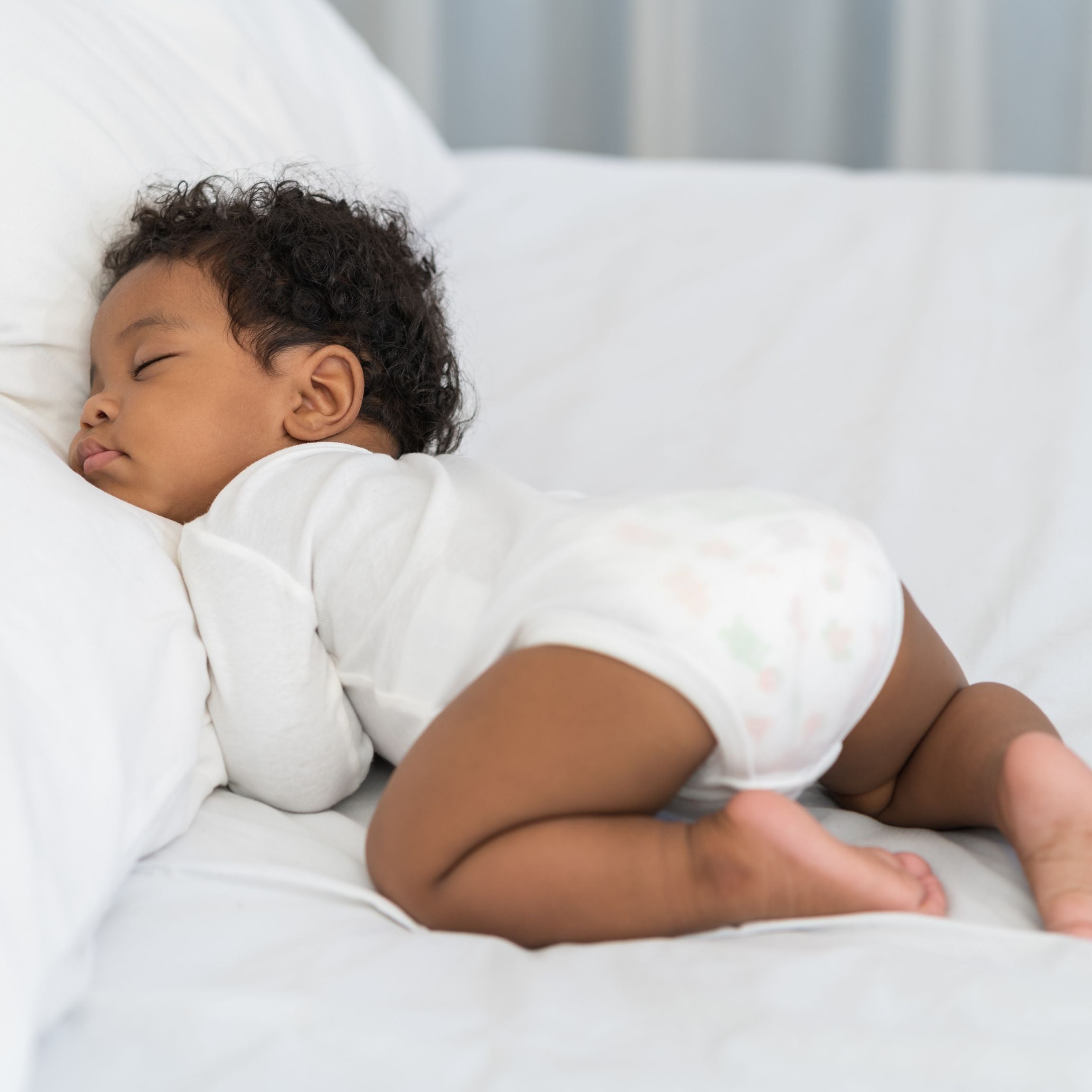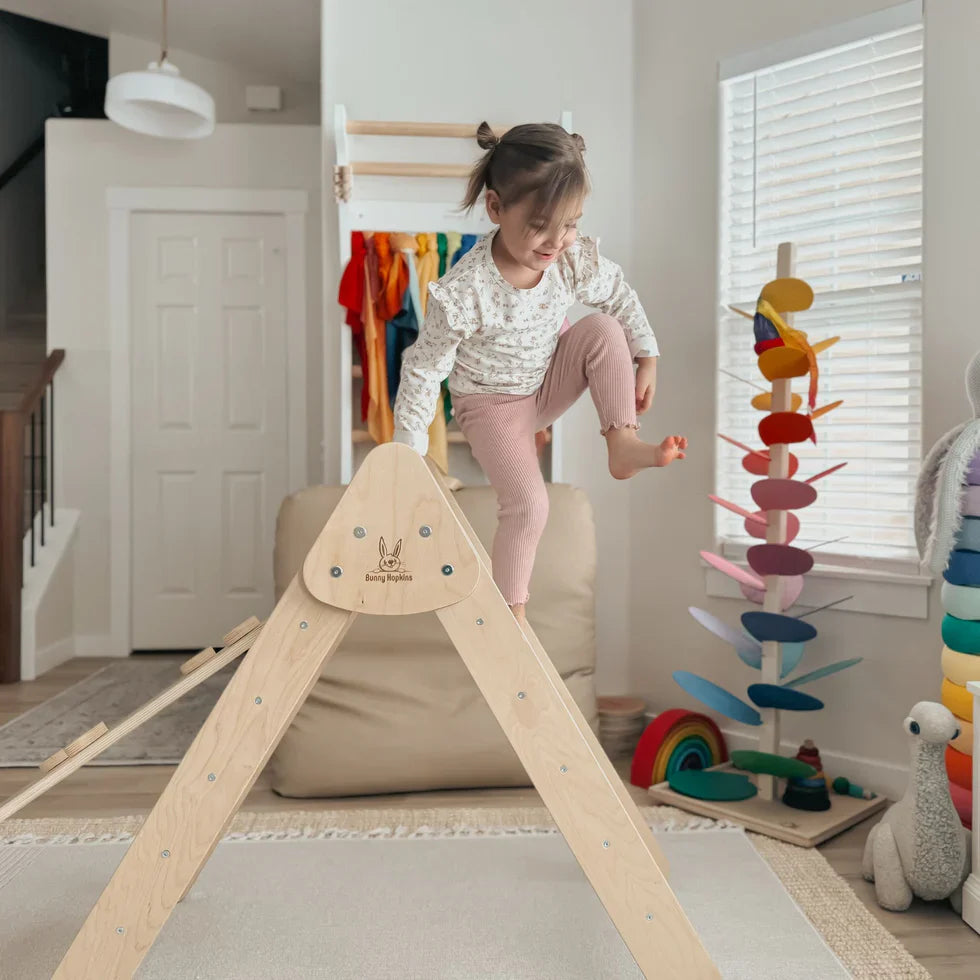Are Crib Mattresses Safe? The Toxic Truth Every Parent Must Know
Your baby spends 12-16 hours daily on their crib mattress, but new research reveals 85% of crib mattresses contain harmful chemicals that could affect your little one's health. If you're wondering "is my baby's crib mattress safe?" – this comprehensive guide has the answers you need.
What Toxic Chemicals Are Found in Baby Mattresses?
A groundbreaking University of Texas study analyzed 20 crib mattresses and discovered alarming levels of toxic substances. Here's what researchers found lurking in baby sleep products:
Phthalates in Crib Mattresses
- Found in: 45% of mattresses tested
- Concentration: Up to 35% by weight
- Health concerns: Hormone disruption, respiratory issues, developmental delays
- Common sources: Vinyl mattress covers, PVC waterproof layers
Flame Retardants in Baby Mattresses
- Found in: Polyurethane foam cores
- Concentration: Up to 3% by weight
- Health risks: Cancer, thyroid problems, learning disabilities
- Hidden truth: Even "California TB117-compliant" mattresses contained these chemicals
Unreacted Isocyanates
- Found in: Manufacturing residue in foam
- Health effects: Asthma triggers, skin irritation, respiratory problems
- Why it matters: Your baby breathes these chemicals all night long
How Do Toxic Chemicals in Crib Mattresses Affect Babies?
Babies are especially vulnerable to chemical exposure from mattresses because:
- Faster breathing rates = more chemical inhalation
- Thinner skin = increased absorption through direct contact
- Body heat increases emissions = chemicals off-gas 4x more in baby's breathing zone
- Developing systems = greater susceptibility to toxin damage
Safe Crib Mattress Materials: What to Look For
Best Non-Toxic Crib Mattress Materials:
- Organic cotton - GOTS certified preferred
- Organic wool - Natural flame retardant properties
Toxic Crib Mattress Materials to Avoid:
- Vinyl or PVC covers
- Polyurethane foam with chemical flame retardants
- "Waterproof" chemical coatings
- Memory foam (often contains chemicals)
How to Choose a Non-Toxic Crib Mattress: Complete Checklist
Essential Certifications for Safe Baby Mattresses:
- ✅ GREENGUARD Gold - Low chemical emissions
- ✅ CertiPUR-US - Foam without harmful chemicals
- ✅ GOTS (Global Organic Textile Standard) - Organic materials
- ✅ Cradle to Cradle Certified - Comprehensive safety standards
Red Flags When Shopping for Crib Mattresses:
- ❌ Strong chemical odors
- ❌ "TB117" or flame retardant labels
- ❌ Vinyl or PVC covers
- ❌ Lack of ingredient transparency
- ❌ Extremely low prices (often indicates cheap, toxic materials)
Best Non-Toxic Crib Mattress Brands 2025
Our favorite non-toxic crib mattresses.
Crib Mattress Safety: Immediate Steps to Protect Your Baby
Tonight (Emergency Steps):
- Increase nursery ventilation - Open windows when possible
- Add an air purifier - HEPA filter for chemical removal
- Check for odors - Strong smells indicate off-gassing
- Monitor baby's breathing - Watch for any changes
This Week (Short-term Solutions):
- Research your current mattress - Check manufacturer's website for materials
- Look up recalls - Visit CPSC.gov for safety alerts
- Assess your baby's symptoms - Unexplained rashes, breathing issues, or sleep problems
- Start shopping for alternatives - If your mattress shows red flags
Long-term (Comprehensive Safety):
- Replace toxic mattresses with certified non-toxic options
- Choose organic bedding - Sheets, blankets, and covers
- Maintain good air quality - Regular ventilation and air purification
- Stay informed - Follow safety recalls and new research
Organic Crib Mattress vs Regular: Is It Worth the Investment?
Organic Crib Mattress Benefits:
- Chemical-free materials - No phthalates, flame retardants, or VOCs
- Better air quality - Reduced off-gassing in nursery
- Durability - Often last longer than conventional mattresses
- Peace of mind - Knowing your baby sleeps safely
Cost Consideration:
While organic crib mattresses cost more upfront ($300-800 vs $100-300), consider:
- Health benefits - Preventing potential medical costs
- Longevity - Can be used for multiple children
- Resale value - Higher demand for quality, safe products
Crib Mattress Chemical Testing: What Research Shows
The University of Texas study revealed concerning trends:
- Pre-2009: Traditional phthalates in most mattresses
- Post-2009: "Alternative" chemicals with unknown safety profiles
- Current reality: Many "safer" alternatives may be equally harmful
Key finding: Chemical regulations led to substitutions, not elimination of toxic substances.
DIY Crib Mattress Safety Test
Signs Your Mattress May Contain Toxic Chemicals:
- Smell test - Strong chemical odors, especially when warm
- Label check - Look for "TB117," "flame retardant," or vinyl mentions
- Age assessment - Mattresses from 2004-2014 most likely to contain phthalates
- Material identification - Vinyl covers and polyurethane foam are red flags
Creating a Non-Toxic Nursery: Beyond the Mattress
Complete Safe Sleep Environment:
- Organic cotton sheets - GOTS certified
- Natural fiber blankets - Avoid synthetic materials
- Chemical-free room - Low-VOC paints and finishes
- Air purification - HEPA filtration system
- Regular cleaning - Reduce dust and chemical accumulation
Frequently Asked Questions About Crib Mattress Safety
Q: How long do chemicals off-gas from crib mattresses?
A: Off-gassing can continue for months to years, especially with temperature fluctuations from your baby's body heat.
Q: Are expensive crib mattresses always safer?
A: Not necessarily. Price doesn't guarantee safety - look for certifications and ingredient transparency instead.
Q: Can I make my current mattress safer?
A: Limited options exist, but proper ventilation and organic covers may help reduce exposure while you shop for a replacement.
Q: When should I replace my baby's mattress?
A: If it has strong odors, lacks safety certifications, or contains materials on the "avoid" list, prioritize replacement.
The Bottom Line: Your Baby Deserves Chemical-Free Sleep
Your baby's crib mattress should be the safest place in your home, not a source of toxic chemical exposure. With 85% of conventional mattresses containing harmful substances, choosing a non-toxic crib mattress isn't just a luxury – it's essential for your baby's health.
Next Steps: Finding the Perfect Non-Toxic Crib Mattress
Ready to ensure your baby sleeps safely? Here's what to do:
- Assess your current mattress using our safety checklist
- Research certified non-toxic options from transparent manufacturers
- Read reviews from other health-conscious parents
- Invest in your baby's health with a certified safe sleep solution
Remember: Every night your baby spends on a toxic mattress is another night of chemical exposure. The research is clear, the risks are real, and safer alternatives exist.
Looking for rigorously vetted, non-toxic crib mattresses? Simple Steps Market curates only the safest baby sleep products from brands that meet our strict transparency and safety standards. Because your baby's first breath shouldn't contain chemicals.
Expert Tip: When shopping for non-toxic crib mattresses, always request ingredient lists and third-party testing results. If a manufacturer can't provide this information, keep looking.
Sources:
- Boor, B.E., et al. (2015). "Identification of Phthalate and Alternative Plasticizers, Flame Retardants, and Unreacted Isocyanates in Infant Crib Mattress Covers and Foam." Environmental Science & Technology Letters, 2(4), 89-94.
- Environmental Protection Agency (EPA). Chemical Safety Guidelines.
- Consumer Product Safety Commission (CPSC). Crib Safety Standards.
Medical Disclaimer: This information is for educational purposes only and should not replace professional medical advice. Consult your pediatrician with any health concerns about your baby's sleep environment.




